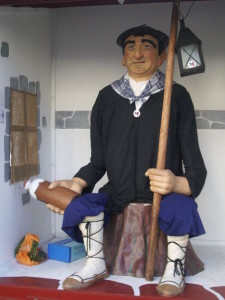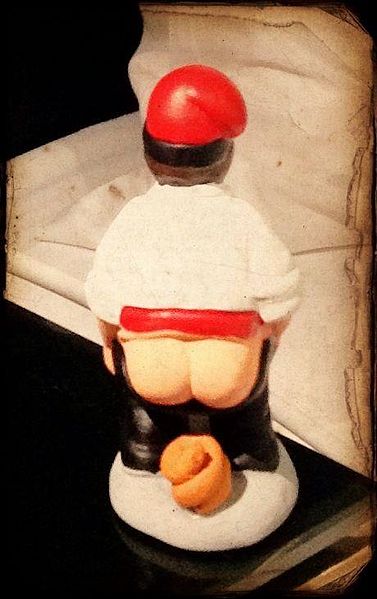Ho, ho, ho The Christmas season has come. And since learning a language is much more than learning some vocabulary and structures, I am determined (and delighted) to showing you some of the cultural aspects of this Christmas season in Spain, which will be very helpful to understand the Spanish culture better and will give you a flavor of Spain and its Christmas.
* * * * *
The Spanish Christmas go around many of the same traditions as they do in the rest of the world. It’s all about family gatherings, celebration, kindness, generosity… As well as food, drink, villancicos (‘Christmas carols’) and gifts. However there are peculiarities, some customs and traditions that make Christmas in Spain different from any other countries.
As you know, Spain is quite a big country with many different regions (13 to be precise) and each one holds special customs. You must have into account as well that Spain has a very religious past, so a traditional Christmas would revolve around religious customs.
24th of December: Christmas Eve ☞ Nochebuena (Goodnight)
Nochebuena is probably the most important family gathering of the year.
In the evening, people will gather after work to celebrate the beginning of the Christmas holidays with friends and few glasses of cava (‘champagne’). After that, people go home to their families and enjoy a typical Christmas meal with the family. A typical Christmas dinner will vary from region to region but some common ingredients will be some fish, like lubina al horno (‘baked sea bass’) or besugo al horno (‘baked red sea bream’), the turkey is not that common in Spain, although we still can have roast suckling pig in some parts, but fish is the most common mean dish in a Christmas dinner. Around the fish one can find sea food, like prawns and crayfish, clams, mussels and octopus… In some regions, lombarda (‘red cabbage’) is a traditional Christmas dish and in others is the roast stuffed capon… As you can see, different dishes from different regions.
What is a common thing is going with the family to the Misa del Gallo (‘Midnight mass’) which literally means Rooster’s Mass where the Christians commemorate the birth of Jesus Christ.
Santa Claus or Papá Noel, as we call him in Spain, does not make part of the traditional Spanish Christmas and it’s quite recent. In Spain, the gifts are given in Reyes, the 6th of January (the Epiphany) but we’ll talk about that in a following post. However, since the 6th of January is the end of Christmas holidays, some families adopted the Santa Claus custom just to give the gifts at the beginning of the holidays so that the children can enjoy their presents during the holidays.
As I was saying, Papá Noel is not part of the Spanish Christmasy figures, but we have other traditional personages that also bring presents to well behaved children, like the Olentzero, a coalman who lives in the mountains and come the 24th to bring gifts to children in the Basque Country.
25 th of December: Christmas Day ☞ Navidad
Navidad is national holiday in Spain so all business and shops are closed this day, although it’s not a day of a big celebration. It’s a day of relax instead where people usually go out in the morning and have an aperitif with other members of the family. We have a very large meal at lunch time.
During the day, well, from the 24th to the end of the Christmas season on the 6th, we have always a plate with turrón (‘a kind of nougat’), peladillas (‘sugared almonds’), mazapanes (‘marzipan’), mantecados and polvorones (‘some kind of shortbread but not exactly’).
The decoration for Christmas is a nativity scene, called Belén, which always have the figurines of baby Jesus, Joseph and Mary, and the ox and the mule. In some houses the Belén is very big and has the Three Wise Men, the shepherds and angels, the village of Belem… a very detailed nativity scene as described in the gospels of Matthew and Luke. As I told you before, there are as many Christmas customs as they are regions in Spain, and one funny custom in Catalonia is the figurine called “caganer“, which is a figurine depicted as having a poo… There are even prizes for the best “belén”!
We also have the Árbol de Navidad (‘Christmas tree’), but as Papá Noel, that’s not that traditional.
¡Felices Fiestas!
I leave you with a couple of villancicos (‘Christmas carols’) for you to listen and have a taste of a Christmas in Spain. Enjoy the angelical voices…!




